-
 Bitcoin
Bitcoin $114100
-0.14% -
 Ethereum
Ethereum $3635
-0.73% -
 XRP
XRP $2.949
-2.85% -
 Tether USDt
Tether USDt $0.9999
-0.03% -
 BNB
BNB $760.3
-0.78% -
 Solana
Solana $163.8
-2.77% -
 USDC
USDC $0.9998
-0.04% -
 TRON
TRON $0.3323
-0.57% -
 Dogecoin
Dogecoin $0.2004
-2.99% -
 Cardano
Cardano $0.7245
-2.87% -
 Hyperliquid
Hyperliquid $37.52
-3.75% -
 Stellar
Stellar $0.3915
-3.58% -
 Sui
Sui $3.416
-2.20% -
 Bitcoin Cash
Bitcoin Cash $559.5
-0.84% -
 Chainlink
Chainlink $16.41
-2.16% -
 Hedera
Hedera $0.2406
-1.78% -
 Ethena USDe
Ethena USDe $1.001
0.00% -
 Avalanche
Avalanche $22.13
-1.98% -
 Litecoin
Litecoin $117.8
-4.32% -
 UNUS SED LEO
UNUS SED LEO $8.989
0.01% -
 Toncoin
Toncoin $3.183
-5.09% -
 Shiba Inu
Shiba Inu $0.00001214
-1.97% -
 Uniswap
Uniswap $9.654
-1.71% -
 Polkadot
Polkadot $3.616
-1.18% -
 Monero
Monero $291.6
-2.66% -
 Dai
Dai $0.9999
0.00% -
 Bitget Token
Bitget Token $4.310
-1.10% -
 Cronos
Cronos $0.1382
-1.93% -
 Pepe
Pepe $0.00001021
-3.40% -
 Aave
Aave $257.9
-1.42%
What is DID? How to achieve on-chain identity authentication?
DIDs enable secure, privacy-preserving on-chain identity authentication, allowing users to control their digital identities without centralized authorities.
Apr 11, 2025 at 03:07 pm
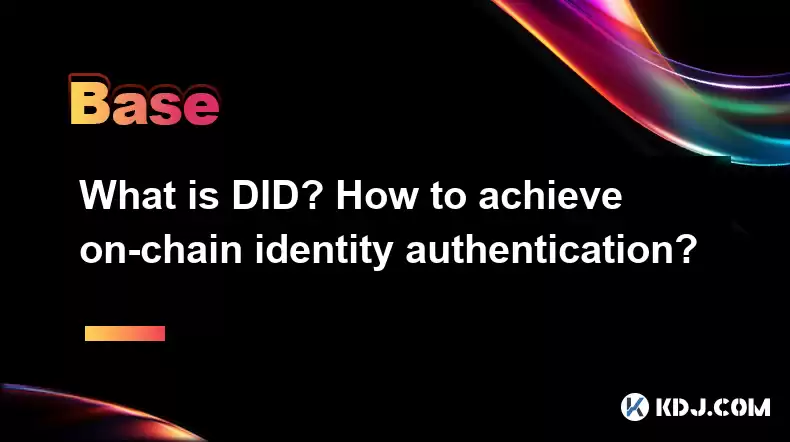
What is DID? How to Achieve On-Chain Identity Authentication?
Decentralized Identifiers (DIDs) are a new type of identifier that enables verifiable, decentralized digital identity. A DID refers to any subject (e.g., a person, organization, thing, data model, abstract entity, etc.) as determined by the controller of the DID. In the realm of blockchain and cryptocurrency, DIDs play a crucial role in enabling secure, privacy-preserving identity management without relying on centralized authorities.
Understanding Decentralized Identifiers (DIDs)
DIDs are a core component of the decentralized identity ecosystem. They are typically represented as a string of characters that follows a specific format, such as did:example:123456789abcdefghi. The DID itself is just an identifier; what makes it powerful is the associated DID Document, which contains information such as public keys, service endpoints, and other metadata needed to interact with the DID.
DIDs are designed to be globally unique, resolvable, and cryptographically verifiable. This means that anyone can verify the authenticity of a DID and its associated DID Document without needing to trust a central authority. This is achieved through the use of cryptographic proofs and decentralized networks, often leveraging blockchain technology.
The Role of DIDs in On-Chain Identity Authentication
On-chain identity authentication refers to the process of verifying the identity of a user or entity on a blockchain network. DIDs facilitate this process by providing a standardized way to represent and manage identities on the blockchain. By using DIDs, users can prove their identity without revealing sensitive personal information, thereby enhancing privacy and security.
DIDs enable self-sovereign identity, where individuals have full control over their digital identities. This is in contrast to traditional identity systems, where a central authority manages and controls user identities. With DIDs, users can create, manage, and share their identities as they see fit, without needing to rely on third parties.
How to Achieve On-Chain Identity Authentication with DIDs
To achieve on-chain identity authentication using DIDs, several steps and technologies are involved. Below is a detailed guide on how to implement this process.
Setting Up a DID
Choose a DID Method: The first step is to choose a DID method that is compatible with the blockchain network you are using. Popular DID methods include
did:ethr,did:sov, anddid:key. Each method has its own set of rules and requirements.Generate a DID: Use a tool or library specific to your chosen DID method to generate a DID. For example, if you are using
did:ethr, you can use theethr-didlibrary to generate a DID based on an Ethereum address.Create a DID Document: The DID Document contains the necessary information to interact with the DID, such as public keys and service endpoints. You can create a DID Document manually or use a tool that automates this process.
Register the DID: Depending on the DID method, you may need to register the DID on a blockchain or a decentralized network. For example, with
did:ethr, the DID is registered on the Ethereum blockchain.
Verifying Identity with DIDs
Create a Verifiable Credential: A verifiable credential is a digital document that contains claims about a subject and is cryptographically signed by an issuer. To create a verifiable credential, you need to define the claims, obtain a signature from an issuer, and package the credential in a standard format such as W3C Verifiable Credentials.
Present the Verifiable Credential: When you need to prove your identity, you present the verifiable credential to a verifier. This can be done through a direct interaction or through a decentralized network.
Verify the Verifiable Credential: The verifier checks the signature on the verifiable credential to ensure it is valid and has not been tampered with. They also verify the issuer's identity to ensure the credential is trustworthy.
Using DIDs for On-Chain Transactions
Link DID to Blockchain Address: To use a DID for on-chain transactions, you need to link your DID to your blockchain address. This can be done by including the DID in the transaction metadata or by using a smart contract that maps DIDs to addresses.
Sign Transactions with DID: When initiating a transaction, you can sign it with the private key associated with your DID. This ensures that the transaction is verifiable and can be linked back to your DID.
Verify Transactions with DID: Other users or smart contracts can verify the transaction by checking the signature against the public key in your DID Document. This ensures that the transaction is authentic and comes from the claimed identity.
Security and Privacy Considerations
Security is a critical aspect of on-chain identity authentication with DIDs. Since DIDs are based on cryptographic principles, it is essential to manage private keys securely. Losing access to your private key can result in losing control over your DID and associated assets.
Privacy is another important consideration. DIDs allow users to selectively disclose information, meaning you can share only the necessary information for a specific interaction. This minimizes the risk of data breaches and unauthorized access to personal information.
Integration with Existing Systems
Integrating DIDs with existing systems can be challenging but is essential for widespread adoption. Many organizations are developing solutions that bridge the gap between traditional identity systems and decentralized identities.
API Integration: Use APIs to connect existing systems with DID-based identity solutions. This allows for seamless interaction between legacy systems and new decentralized identity protocols.
Middleware Solutions: Implement middleware that translates between traditional identity formats and DID formats. This can help organizations transition to decentralized identities without disrupting existing workflows.
User Education: Educate users about the benefits and usage of DIDs to encourage adoption. This includes providing clear documentation, tutorials, and support resources.
Frequently Asked Questions
1. Can DIDs be used across different blockchain networks?
Yes, DIDs are designed to be interoperable across different blockchain networks. However, the specific DID method used may have limitations or requirements that need to be considered when moving between networks.
2. How do DIDs protect against identity theft?
DIDs protect against identity theft by using cryptographic proofs to verify identity. Since the private key associated with a DID is required to make changes or sign transactions, as long as the private key is kept secure, the DID remains protected.
3. Are there any costs associated with using DIDs for on-chain identity authentication?
The costs associated with using DIDs can vary depending on the blockchain network and DID method used. Some networks may require transaction fees for registering DIDs or verifying credentials, while others may be free to use.
4. How can organizations ensure compliance with regulations when using DIDs?
Organizations can ensure compliance by implementing DID solutions that meet regulatory requirements, such as data protection laws. This may involve using verifiable credentials that comply with standards like the W3C Verifiable Credentials Data Model and working with trusted issuers and verifiers.
Disclaimer:info@kdj.com
The information provided is not trading advice. kdj.com does not assume any responsibility for any investments made based on the information provided in this article. Cryptocurrencies are highly volatile and it is highly recommended that you invest with caution after thorough research!
If you believe that the content used on this website infringes your copyright, please contact us immediately (info@kdj.com) and we will delete it promptly.
- Acapulco Crafts in Crisis: Sales Plummet, Artisans Struggle
- 2025-08-06 14:30:12
- SEC, Crypto & Bitwise CIO: A New Dawn?
- 2025-08-06 14:35:11
- Coinbase, Financing, and the Crypto Market: Navigating Choppy Waters in NYC Style
- 2025-08-06 12:50:11
- Bitcoin in Indonesia: Crypto Education and Economic Strategy
- 2025-08-06 12:50:11
- DeriW Mainnet: Zero Gas Fees Revolutionize On-Chain Derivatives Trading
- 2025-08-06 10:30:11
- IOTA, Cloud Mining, and Eco-Friendly Crypto: A New York Investor's Take
- 2025-08-06 10:30:11
Related knowledge
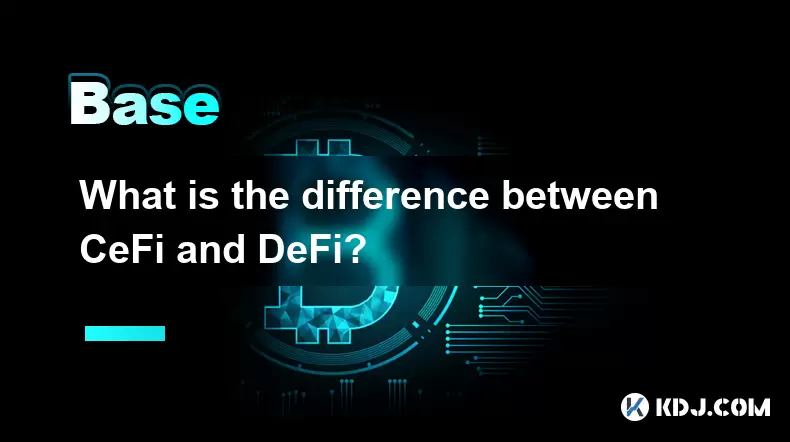
What is the difference between CeFi and DeFi?
Jul 22,2025 at 12:28am
Understanding CeFi and DeFiIn the world of cryptocurrency, CeFi (Centralized Finance) and DeFi (Decentralized Finance) represent two distinct financia...

How to qualify for potential crypto airdrops?
Jul 23,2025 at 06:49am
Understanding What Crypto Airdrops AreCrypto airdrops refer to the distribution of free tokens or coins to a large number of wallet addresses, often u...
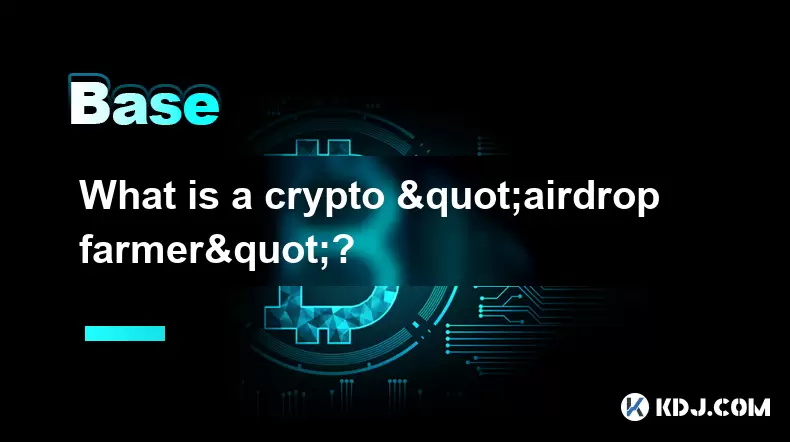
What is a crypto "airdrop farmer"?
Jul 24,2025 at 10:22pm
Understanding the Role of a Crypto 'Airdrop Farmer'A crypto 'airdrop farmer' refers to an individual who actively participates in cryptocurrency airdr...
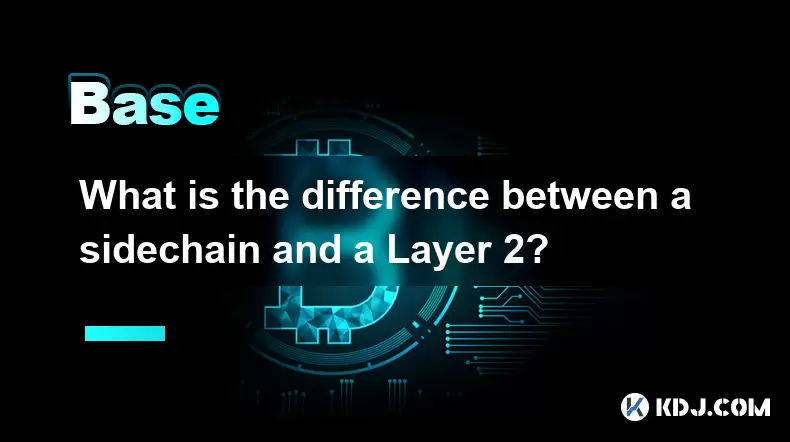
What is the difference between a sidechain and a Layer 2?
Jul 20,2025 at 11:35pm
Understanding the Concept of SidechainsA sidechain is a separate blockchain that runs parallel to the main blockchain, typically the mainnet of a cryp...
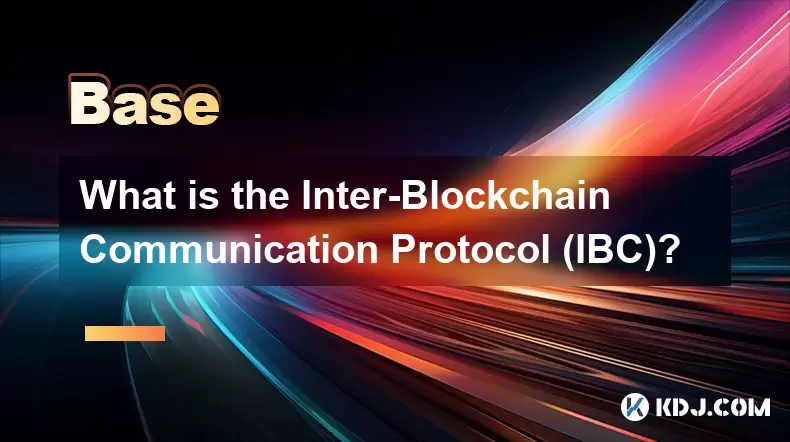
What is the Inter-Blockchain Communication Protocol (IBC)?
Jul 19,2025 at 10:43am
Understanding the Inter-Blockchain Communication Protocol (IBC)The Inter-Blockchain Communication Protocol (IBC) is a cross-chain communication protoc...
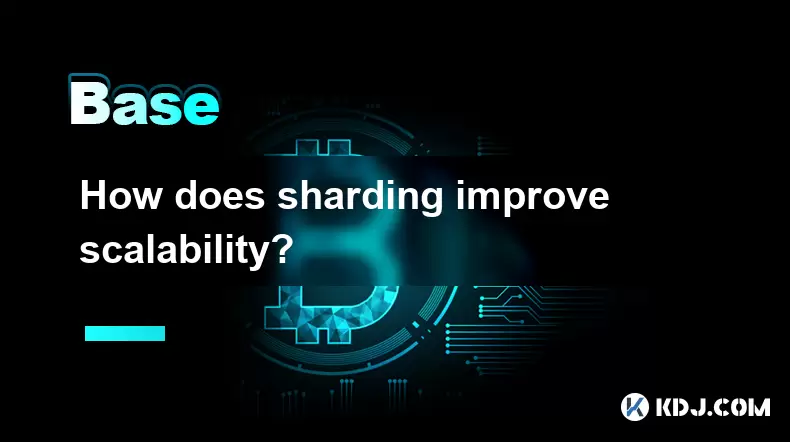
How does sharding improve scalability?
Jul 20,2025 at 01:21am
Understanding Sharding in BlockchainSharding is a database partitioning technique that is increasingly being adopted in blockchain technology to enhan...

What is the difference between CeFi and DeFi?
Jul 22,2025 at 12:28am
Understanding CeFi and DeFiIn the world of cryptocurrency, CeFi (Centralized Finance) and DeFi (Decentralized Finance) represent two distinct financia...

How to qualify for potential crypto airdrops?
Jul 23,2025 at 06:49am
Understanding What Crypto Airdrops AreCrypto airdrops refer to the distribution of free tokens or coins to a large number of wallet addresses, often u...

What is a crypto "airdrop farmer"?
Jul 24,2025 at 10:22pm
Understanding the Role of a Crypto 'Airdrop Farmer'A crypto 'airdrop farmer' refers to an individual who actively participates in cryptocurrency airdr...

What is the difference between a sidechain and a Layer 2?
Jul 20,2025 at 11:35pm
Understanding the Concept of SidechainsA sidechain is a separate blockchain that runs parallel to the main blockchain, typically the mainnet of a cryp...

What is the Inter-Blockchain Communication Protocol (IBC)?
Jul 19,2025 at 10:43am
Understanding the Inter-Blockchain Communication Protocol (IBC)The Inter-Blockchain Communication Protocol (IBC) is a cross-chain communication protoc...

How does sharding improve scalability?
Jul 20,2025 at 01:21am
Understanding Sharding in BlockchainSharding is a database partitioning technique that is increasingly being adopted in blockchain technology to enhan...
See all articles

























































































